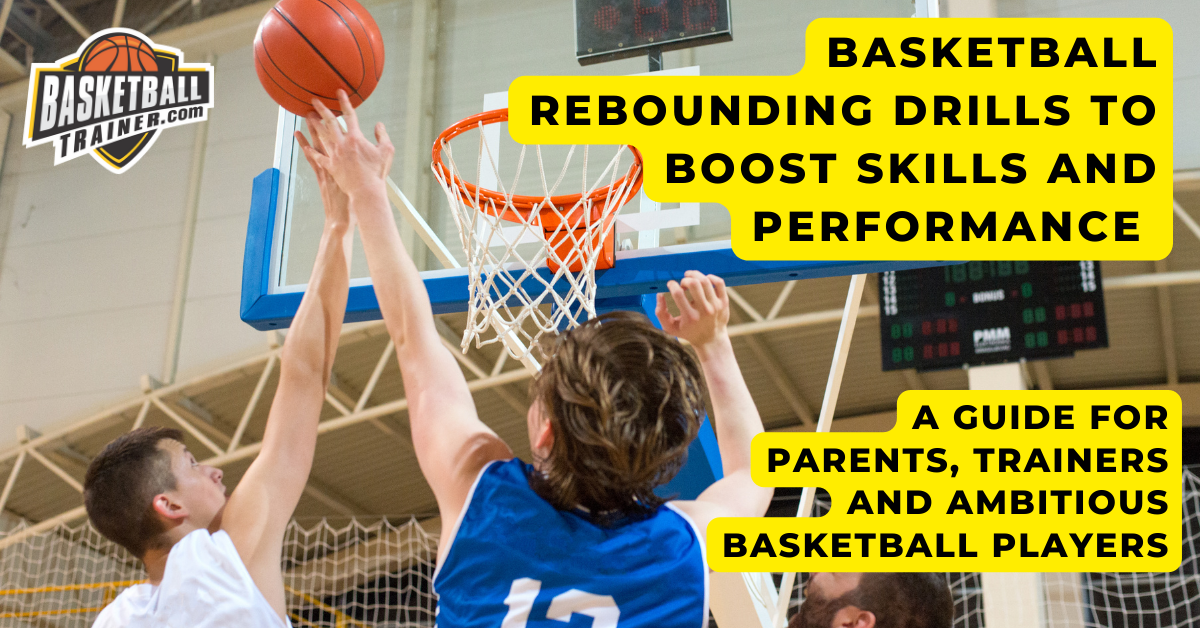
Finding the Best Basketball Shoes for Flat Feet – can be an elusive journey for many ambitious basketball players who understand the importance of finding the perfect pair of kicks for their anatomy challenges.
Before you click out and find something more interesting… know that 25% of people have flat feet and your performance can increase by buying the right basketball shoe for flat feet.
Flat feet, while common, can pose challenges on the court. But fear not, as this comprehensive guide will lead you to victory by helping you discover your ideal shoe match.
You’ll learn about the anatomy of flat feet and how it affects your choice in footwear. We’ll dive into various playing styles and discuss how they impact your decision-making process when selecting top basketball shoes for flat-footed athletes like yourself.
We won’t stop there; we’re here to provide valuable insights on trying before buying and ensuring an optimal fit that provides comfort and support throughout every game. Plus, we’ll share tips on caring for your sneakers so they remain in peak condition season after season.
In addition to our lineup of best budget and outdoor basketball shoes for flat feet, we also offer alternative solutions to help enhance performance on the court even further.
So lace up those sneakers – it’s time to elevate your game with our expert guidance on finding the Best Basketball Shoes for Flat Feet!
Table of Contents:
- Understand the Anatomy of Flat Feet
- Choose the Right Shoe for Flat Feet
- Consider Your Playing Style
- Try Before You Buy
- Find the Best Fit
- Caring for Your Sneakers
- Best Budget Basketball Shoes for Flat Feet
- Best Basketball Shoes for Flat Feet
- The Lineup: Top 10 Basketball Shoes for Flat Feet
- Alternatives to Help with Flat Feet in Basketball
- FAQs in Relation to Best Basketball Shoes for Flat Feet
- Conclusion
1. Understand the Anatomy of Flat Feet
Flat feet, also known as fallen arches, occur when the arch of your foot collapses. This condition can cause discomfort and affect your basketball performance. To better understand this concept, let’s break down the anatomy of flat feet:
- The Arch: A natural curve in the middle part of your foot that provides support and shock absorption during movement.
- Tendons and Ligaments: These connective tissues hold the bones together, maintaining the arch shape.
- Muscles: They work with tendons to provide stability and control foot motion while playing basketball.
If you have flat feet, it means that these structures aren’t functioning optimally or are lacking entirely, leading to reduced support for your body weight on the court.
But don’t worry flat footers. We’ve got some fantastic tips lined up for choosing the perfect pair of basketball shoes tailored specifically for players with flat feet.
Why It Matters: The Impact on Your Game
Athletes with flat feet may experience increased fatigue due to inefficient biomechanics during playtime or even injuries like plantar fasciitis if proper footwear isn’t worn regularly. Choosing a shoe designed explicitly for those with fallen arches will significantly improve comfort levels while minimizing injury risks, allowing you to focus solely on dominating every game.
Flat feet can affect basketball players’ balance and stability on the court in several ways. Here are some possible effects based on the provided search results:
- Individuals with flat feet scored lower results compared to individuals with normal arches in terms of time and reaction speed when performing motor tasks
1.
- Foot deformities, including flat feet, can lead to discomfort and pain, which can affect sports performance
2.
- Flat feet may cause changes in foot loading and foot alignment, which can lead to deformities and postural changes that affect motor task performance
1.
- Ankle joint biomechanics can be affected by changes in shoe properties, including weight and cushioning, which can lead to changes in lower extremity biomechanics during a sprint start, for example
3.
- Chronic ankle instability (CAI) is a common issue among basketball players, and individuals with flat feet may be at a higher risk of developing CAI. CAI can affect balance and stability on the court and lead to recurrent ankle sprains
4.
Therefore, basketball players with flat feet may need to pay attention to their foot health and take steps to prevent discomfort, pain, and injuries. This may include using appropriate footwear, such as shoes with good cushioning and support, and performing exercises to strengthen the feet and ankles. In addition, regular check-ups with a podiatrist or a medical professional who specializes in foot care may help identify any potential issues and prevent them from developing into more serious problems.
“Maximize your basketball performance with the best shoes for flat feet. Learn about the anatomy of fallen arches and how to choose the perfect pair. #basketballtraining #flatfeet #shoeshopping” Click to Tweet
2. Choose the Right Shoe for Flat Feet
Alright, let’s talk shoes.
For optimal basketball performance if you have flat feet, it’s essential to select the correct pair of sneakers that meet your particular requirements.
Here are some key features to look for:
- Arch Support: Shoes with proper arch support help distribute pressure evenly across your foot and provide stability during gameplay. This can be very important for those players with wide feet who need proper support for the long time they spend on the hardwood. A high arch is going to require high quality materials in order to be a great shoe for you.
- Cushioning: Adequate cushioning in the midsole can absorb shock and reduce stress on your feet.
- Ankle Support: High-top sneakers offer additional ankle support, which is essential for players prone to injuries due to flat feet.
Finding a shoe brand that offers these features isn’t enough; you also need a model designed specifically for basketball performance not just a list of the best basketball shoes in a tiktok video that is not specific to your challenges.
A few popular options include Nike, Adidas, and Under Armour. Besides well-known brands, don’t be afraid to explore lesser-known companies like New Balance. They might have just what you’re looking for and have been known to focus on most important factors to provide flat footed people a good fit in the right place.
3. Consider Your Playing Style
Let’s talk about how your playing style can impact the type of basketball shoe you should choose for flat feet.
As you know, not all players are created equal – and neither are their shoes.
4. Try Before You Buy
Just like you wouldn’t buy a car without test driving it first, you shouldn’t buy basketball shoes without trying them on first – especially if you have flat feet.
Why, you ask?
Reason #1: Finding the perfect fit can be more challenging than usual if you have flat feet.
Reason #2: Different basketball shoe models and brands have varying support features and cushioning systems, which are crucial factors for players with flat feet.
Action Plan: To make an informed decision, head to your local sports store or check out a Nike retailer and try on multiple pairs of shoes from various brands like Adidas, New Balance, and Under Armour.
Note: If possible, wear the basketball socks you’ll use during games while trying on shoes to get a true feel of how they will perform on the basketball court.
5. Find the Best Fit
Don’t fret.
Finding the perfect basketball shoe fit is crucial for optimal performance and comfort on the court. Let’s explore some tips and tricks to help you find your Cinderella sneaker:
- Measure Your Feet: Visit a specialty store to get accurate measurements of your feet length and width.
- Sizing Up: Consider going half a size up from your regular shoe size, as feet tend to swell during physical activity.
- Lacing Techniques: Experiment with different lacing techniques, such as loop lacing lock or parallel lacing, for better support and stability.
- Insoles & Orthotics: Try adding custom orthotics or supportive insoles specifically designed for flat feet – they can make all the difference.
- Bend Test: A good basketball shoe should bend at the ball of your foot but remain rigid through the arch area. This provides essential support for flat-footed players.
The key takeaway? Your ideal basketball shoes should feel like an extension of yourself – snug yet comfortable, providing ample support without sacrificing mobility on those slam dunks.
Caring for Your Sneakers
Once you’ve found the perfect basketball shoes for your flat feet, it’s crucial to care for them properly.
Here are some essential tips and tricks to keep those kicks in tip-top shape:
- Clean them regularly: Use a quality sneaker cleaner and follow the manufacturer’s instructions. Keep that dirt and grime at bay.
- Avoid excessive moisture: Wet sneakers can be a breeding ground for bacteria. Dry them out thoroughly after playing or cleaning.
- Rotate your shoes: Give each pair of sneakers time to rest between games by rotating with another pair. This helps maintain their structure and prolongs their life.
- Lace-up right: Properly lacing your shoes not only provides better support but also prevents unnecessary wear on eyelets and other components.
- No shortcuts: Avoid using machines like washers or dryers as they may damage the shoe materials or compromise their performance capabilities.
In short, treat your basketball shoes with love, respect, and proper maintenance – they’ll reward you with improved performance on the court.
Best Budget Basketball Shoes for Flat Feet
Are you ballin’ on a budget? No worries, we’ve got you covered with the best affordable basketball shoes that provide excellent support and comfort for flat feet. Let’s dive into our top picks in the affordable price category:
- Nike Precision 5: This great option combines style, performance, and affordability.
- Adidas D.O.N. Issue #3: Designed in collaboration with NBA star Donovan Mitchell, these sneakers offer superb traction and stability.
- Under Armour Lockdown 5: Known for their lockdown fit and solid cushioning to keep your flat feet comfortable during intense games.
- Skechers Sketch-Air Mega: A lesser-known gem that offers excellent shock absorption and a well-ventilated design.
Recall that it’s not just the cost which is important. Ensure your chosen sneakers provide adequate arch support, cushioning, and stability to keep your flat feet happy on the court.
If you’re looking for more options, check out our comprehensive guide here.
Best Basketball Shoes for Flat Feet
As a flat-footed basketball player, finding the right pair of shoes can make all the difference on the court. You need a shoe that provides ample support and comfort to keep you playing at your best. That’s why we’ve put together a list of the top basketball shoes for flat feet, perfect for ambitious basketball players, their families, basketball training business owners, and basketball coaches.
Here are our top picks:
- Nike LeBron Soldier XIV: These Nike men’s basketball shoes offer excellent support and cushioning with their Zoom Air units, making them a great choice for flat-footed basketball players. The rubber sole provides good traction on the basketball court, and the wider base accommodates wider feet. Check out more about these kicks here.
- Adidas Dame 6: With Lightstrike cushioning technology, this shoe provides impact protection without sacrificing responsiveness. The herringbone pattern on the rubber outsole offers excellent traction, and the midfoot area provides additional support. Learn more about Adidas Dame 6 here.
- New Balance Kawhi Leonard I: Designed in collaboration with NBA star Kawhi Leonard, these basketball sneakers feature FuelCell foam for ultimate comfort and support. The Ortholite sockliner keeps your feet cool and dry, and the lateral support helps prevent ankle injuries. Discover more about New Balance Kawhi Leonard I here.
- Puma Clyde All-Pro Kuzma Mid: This mid-top basketball shoe offers ProFoam cushioning for impact protection and a snug fit. The internal heel counter and heel counter provide additional foot support, and the forefoot area allows for a comfortable fit for those with wider feet. Get the scoop on Puma Clyde All-Pro Kuzma Mid here.
Remember, finding the perfect basketball shoe for flat feet is all about trial and error. Don’t be afraid to try different shoe makes and models until you find the right one for you. With the right shoe, you can play basketball with confidence and comfort.
The Lineup: Top 10 Basketball Shoes for Flat Feet
If you’re a flat-footer, you know how important it is to have the right basketball shoes. Not only do they need to be comfortable, but they also need to provide the right support to enhance your on-court performance.
So, without further ado, here are our top picks for the best basketball shoes for flat feet:
- Jordan 36
- Nike KD 15 and Nike KD 14
- New Balance Two Wxy V3
- Adidas Harden Vol. 7
- Under Armour Curry Flow 10
- Nike Zoom Freak 4
- Nike Air Max Impact 4
- Curry 10
- Air Jordan 36 Low
- Adidas Own The Game
Let’s take a closer look at each of these shoes:
- Jordan 36: With its excellent traction and cushioned footbed, the Jordan 36 is a great choice for flat-footed players. It also has a wider base for added stability.
- Nike KD 15 and Nike KD 14: These shoes have a comfortable fit and provide good support for wider feet. They also have a durable rubber outsole and a midfoot area that offers excellent stability.
- New Balance Two Wxy V3: The New Balance Two Wxy V3 has a herringbone pattern on the outer sole for good traction on the basketball court. It also has an Ortholite sockliner for added comfort.
- Adidas Harden Vol. 7: This shoe has a snug fit and provides excellent support for flat-footed players. It also has a rubber sole and an internal heel counter for added stability.
- Under Armour Curry Flow 10: The Curry Flow 10 has a wider base and lateral support for added stability. It also has a cushioned footbed and a durable Adiwear outsole.
- Nike Zoom Freak 4: This shoe has a comfortable fit and provides good support for flat-footed players. It also has a forefoot area that offers excellent traction on the basketball court.
- Nike Air Max Impact 4: The Air Max Impact 4 has a wider base and arch support for added stability. It also has a breathable design to keep your feet cool on the court.
- Curry 10: This shoe has a comfortable fit and provides good support for narrow feet. It also has a rubber outsole and a heel counter for added stability.
- Air Jordan 36 Low: With its excellent traction and comfortable fit, the Air Jordan 36 Low is a great choice for flat-footed players. It also has a wider base for added stability.
- Adidas Own The Game: This shoe has a wider base and provides good support for flat-footed players. It also has a comfortable fit and a herringbone pattern on the outer sole for good traction on the basketball court.
So, there you have it – our top 10 picks for the best basketball shoes for flat feet. Whether you’re a seasoned player or just starting out, these shoes will help you perform your best on the court.
Alternatives to Help with Flat Feet in Basketball
So, you have flat feet and need some extra support on the court?
No worries.
Besides finding the perfect basketball shoes, there are other ways to improve your flat-footed game.
Let’s explore these alternatives:
- Orthotics: Custom or over-the-counter orthotic inserts can provide additional arch support and cushioning for your feet. Custom made insoles can also be an option.
- Ankle Braces: These can offer stability and prevent injuries. Check out this list of the best basketball ankle braces.
- Socks with Arch Support: Specially designed socks like Feetures High Performance Cushion No Show Tab, give that extra lift needed for comfort during games.
- Plyometric Exercises: Strengthening exercises such as calf raises, toe taps, and heel walks can improve foot strength and flexibility. Learn more about them from this RunnerClick article.
- Taping Techniques: Athletic taping provides temporary relief by supporting the arch and reducing stress on the foot. Here’s a video tutorial to help you out.
Before attempting any of these alternatives, it is essential to seek medical advice.
Your feet will thank you.
FAQs in Relation to Best Basketball Shoes for Flat Feet
What Shoes Work Best for Flat Feet?
The best basketball shoes for flat feet should provide proper arch support, cushioning, and stability. Some top options include the Nike LeBron Soldier 13, Adidas Harden Vol. 4, Under Armour Curry 7, and New Balance Kawhi Leonard 1. It’s essential to try on different models to find the perfect fit for your specific needs.
Are There NBA Players with Flat Feet?
Yes, several NBA players have had flat feet throughout their careers. Notable examples include Michael Jordan and Derrick Rose. These athletes wore specially designed basketball shoes that provided adequate support and comfort while playing at a professional level.
Are Flat Shoes Good for Basketball?
Flat shoes are not ideal for basketball as they lack proper arch support needed during high-impact activities like jumping or running on the court. Basketball players with flatter feet should opt for sneakers specifically designed to accommodate their foot type by providing additional cushioning and stability features.
Do Basketball Shoes Provide Arch Support?
Basketball shoes typically offer some degree of arch support depending on the brand and model chosen; however, those with flatter feet may require extra supportive insoles or custom orthotics to ensure optimal performance without risking injury due to inadequate footwear. Learn more about selecting appropriate footwear here.
Conclusion
In conclusion, finding the best basketball shoes for flat feet requires understanding your foot anatomy, choosing the right shoe based on playing style, trying before buying, and ensuring a proper fit. It’s also important to care for your sneakers properly to ensure longevity. We’ve highlighted some budget-friendly options as well as outdoor-specific choices in our lineup.
Investing in the best basketball shoes for flat feet can make all the difference in your game. Don’t let flat feet hold you back from achieving your full potential on the court. Explore BasketballTrainer.com for more tips and chances to maximize your abilities on the court.











 One of the primary advantages of executive function training is its ability to enhance decision-making abilities. Basketball requires quick thinking and rapid decision making in response to ever-changing game situations. By developing your executive functioning skills, you’ll be better equipped to make smart choices under pressure, leading to more
One of the primary advantages of executive function training is its ability to enhance decision-making abilities. Basketball requires quick thinking and rapid decision making in response to ever-changing game situations. By developing your executive functioning skills, you’ll be better equipped to make smart choices under pressure, leading to more  Prioritizing tasks: With improved time management skills through executive function training, athletes learn how to prioritize tasks effectively so they can allocate appropriate time towards skill development, strength conditioning sessions, film study sessions etc., which contribute positively towards their growth as a player.
Prioritizing tasks: With improved time management skills through executive function training, athletes learn how to prioritize tasks effectively so they can allocate appropriate time towards skill development, strength conditioning sessions, film study sessions etc., which contribute positively towards their growth as a player.


 The key principle behind
The key principle behind 
 It’s natural to feel nervous before a big game or tournament; however, it’s essential to manage these feelings effectively to perform at your best. One helpful technique is using anxiety as a performance enhancer. By viewing nerves as excitement rather than fear, you can channel that energy into increased motivation and intensity on the court.
It’s natural to feel nervous before a big game or tournament; however, it’s essential to manage these feelings effectively to perform at your best. One helpful technique is using anxiety as a performance enhancer. By viewing nerves as excitement rather than fear, you can channel that energy into increased motivation and intensity on the court. No basketball player is perfect; everyone makes mistakes. The key is learning how to manage these errors effectively so they don’t negatively impact your performance throughout the tournament.
No basketball player is perfect; everyone makes mistakes. The key is learning how to manage these errors effectively so they don’t negatively impact your performance throughout the tournament.













